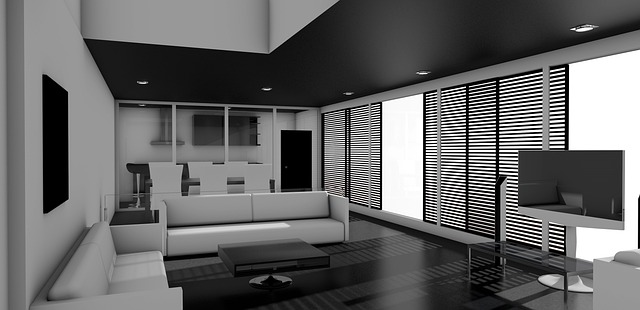High-end interior 3D visualization is transforming client engagement in architecture and design by providing immersive, photorealistic digital models. This technology enhances visual communication, empowers informed decisions, builds trust, and fosters successful projects and collaborations. In real estate, it offers interactive virtual walkthroughs and flythroughs, accelerating sales cycles and increasing client satisfaction, establishing high-end interior 3D visualization as a game-changer.
In today’s digital era, high-end interior 3D visualization is transforming how we experience design. This article delves into the power of 3D walkthroughs and flythroughs, offering immersive client experiences that set new standards. From showcasing stunning interiors to enhancing real estate sales, these advanced techniques are shaping the future of design. Discover how these tools engage clients like never before and explore the impact of visualization on various industries.
High-End Interior 3D Visualization: Setting the Standard
High-end interior 3D visualization is transforming the way clients experience and interact with design concepts. By creating photorealistic digital replicas of proposed spaces, architects and designers can offer immersive walkthroughs that transcend traditional two-dimensional plans. This technology allows clients to virtually step into a design, appreciating its scale, proportions, and aesthetic appeal in a fully three-dimensional context.
Beyond enhancing visual communication, high-end interior 3D visualization sets a new standard for client engagement. It enables stakeholders to make more informed decisions, as they can confidently visualize the final product before construction even begins. This level of detail and interactivity fosters trust between design teams and clients, setting the stage for successful project outcomes and fostering long-term collaborations.
Immersive Client Experiences: The Future of Design
The future of design is here, and it’s immersive. High-end interior 3D visualization isn’t just a tool; it’s an experience that transports clients into digital spaces, allowing them to explore and interact with designs in ways never before possible. By providing a fully realized, three-dimensional walkthrough or flythrough, designers can offer clients a deeper understanding of the final product. This level of immersion fosters client engagement, enabling them to make informed decisions about every detail, from furniture placement to color schemes.
With 3D technology, the design process becomes more collaborative and efficient. Clients can virtually “walk through” their spaces, providing immediate feedback and insights that would otherwise be challenging to convey through traditional two-dimensional renderings. This enhanced client experience not only speeds up the design and approval process but also sets a new standard for communication and satisfaction in the industry.
Walkthroughs and Flythroughs: Techniques for Engagement
Walkthroughs and flythroughs are powerful tools in the architecture, design, and real estate industries, offering a dynamic way to engage clients and showcase properties or designs. These immersive experiences allow potential buyers or investors to virtually explore spaces as if they were physically present, providing a unique advantage over traditional 2D plans or renderings.
By combining high-end interior 3D visualization with interactive walkthroughs, designers can create an engaging narrative around the space. Flythroughs, in particular, enable users to navigate through a property, revealing its features and layout in a seamless, fluid motion. Whether it’s a grand entrance leading to a spacious living area or a winding staircase connecting different levels, these techniques bring designs to life, fostering a deeper connection between the client and the final product.
Enhancing Real Estate: Visualization's Impact on Sales
In today’s digital era, real estate professionals are leveraging high-end interior 3D visualization techniques to offer clients an immersive experience that surpasses traditional two-dimensional plans. By creating detailed virtual walkthroughs and flythroughs, agents can showcase properties’ unique features and layouts with unparalleled accuracy and flair. Prospective buyers can virtually explore each room, visualize their future home’s potential, and make informed decisions without physically visiting every location.
This innovative approach has significantly impacted sales, as it allows clients to connect emotionally with a property on a deeper level. High-end interior 3D visualizations provide an opportunity for buyers to envision themselves living in the space, fostering a sense of belonging that traditional marketing materials often struggle to convey. As a result, sales cycles have shortened, and satisfaction levels among both buyers and sellers have increased, solidifying the role of advanced visualization tools as a game-changer in the real estate industry.
In conclusion, high-end interior 3D visualization is transforming the way we experience design. By incorporating immersive walkthroughs and flythroughs, architects and real estate professionals can offer clients a unique, engaging perspective that surpasses traditional 2D plans. This technology not only enhances sales but also sets a new standard for client interactions, promising a brighter future for design presentation and customer satisfaction.
